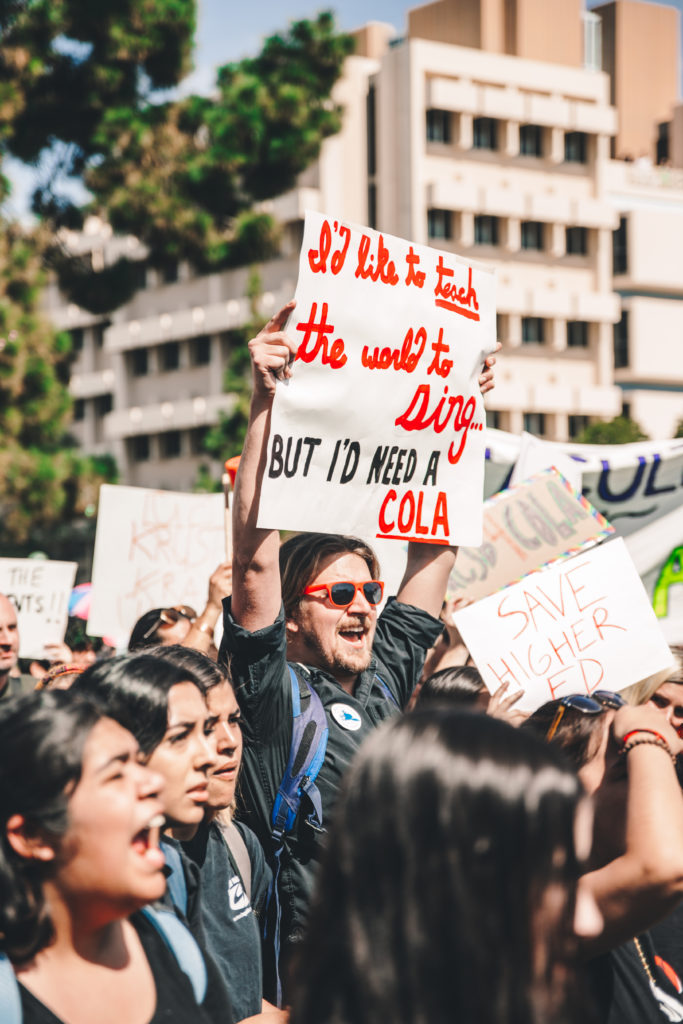Troy Sambajon
National Beat Reporter
If class relations are at the center of political life and identity, how do they explain the rise of organizations like UC Santa Barbara’s (UCSB) Cost of Living Adjustment (COLA), the fight for unionization, the Black Lives Matter movement, and other social justice movements?
Dr. McCarthy, a visiting professor from the University of Southern California (USC), attempted to answer these questions in his talk on April 4, in association with UCSB’s Blum Center on Poverty, Inequality, and Democracy.
In his talk, “The Problem of Class Abstraction: Culture and Class Formation in Social Theory,” Dr. McCarthy argued that while popular socialist perspectives can reduce class relations to the bifurcated roles of “proletariat” and “bourgeoisie,” shaking up class relations requires us to engage with non-class-based identities such as race, gender, location, and more.
But first, how would this idea even begin to apply to UCSB?
Across the UC campuses, the fight for a COLA is one example of how this idea could be applied to campus solidarity struggles. Starting at UC Santa Cruz and then spreading their fight throughout the state, UC teaching assistants (TA) argued for COLA to address the burden of high rent and low wages.
According to Professor McCarthy’s theory, this class-based movement uses food insecurity and real estate location, as expressions of class-based factors, to generate solidarity among TAs, students, and even professors.
By expanding the understanding of what factors impact TAs and COLA, the idea of class reductionism is criticized. Class reductionism, Dr. McCarthy explained, is the oversimplification of class-based power struggles within two dimensions: the oppressed and the oppressor, the “proletariat” and the “bourgeoisie.”
Dr. McCarthy argues that, while polarizing class relations is not necessarily “bad,” this abstraction of class relations largely ignores intersectional identities that are crucial in understanding solidarity movements.
Expanding our understanding of the factors behind COLA also reforms the ideas of class dynamism, the idea that capitalism does not lead to the convergence of class experiences, but generates a wide variety of workers with differences across firms, sectors, and industries. This lens recognizes that, before being identified as “laborers,” workers of a certain ethnicity, and from a certain neighborhood have their own unique narrative. Looking at identifications of race, for example, while interpreting solidarity and labor movements is one key factor to class dynamism.
“Sometimes the best way to shake the roots of a tree is by grabbing the branches,” Dr. McCarthy explained. “Racism is a large, low-hanging branch while class relations are the roots. We must shake the roots by grabbing at branches.”
From the UC Office of the President, the 2019 Annual Accountability Sub-Report on Diversity offered key insights into the demographic of UC staff.
“Compared to students and faculty, UC staff are the most racially and ethnically diverse population,” it states.
“Nearly one in three (32 percent) of UC staff are from underrepresented racial and ethnic groups compared to 29 percent of undergraduates, 13 percent of graduate academic students, and ten percent of ladder-rank faculty. Asian and [Latino workers], both domestic and international, are the fastest-growing populations among UC staff.” Thus, even in the UC system, it is important to remember crucial demographics like these in labor movements because, as Dr. McCarthy emphasized, race and class are inextricably tied.
Class-based movements and race cannot be strictly ignored without risking the possibility of repeating history. In regard to UC’s COLA and on-duty grading strikes, particularly, UCSB’s own COLA, multi-layered factors impacted solidarity with the teaching assistants and even caused students and some professors to join the picket line.
“[Class reductionism] misunderstands and cannot explain why people mobilize for non-class groups,” argued Professor McCarthy.
The argument that we cannot ground solidarity movements in class relations alone and include factors such as race is exhibited in movements such as COLA. However, we can only begin to think about how his argument and an intersectional approach is applicable to Santa Barbara, UC-wide movements, and events.











